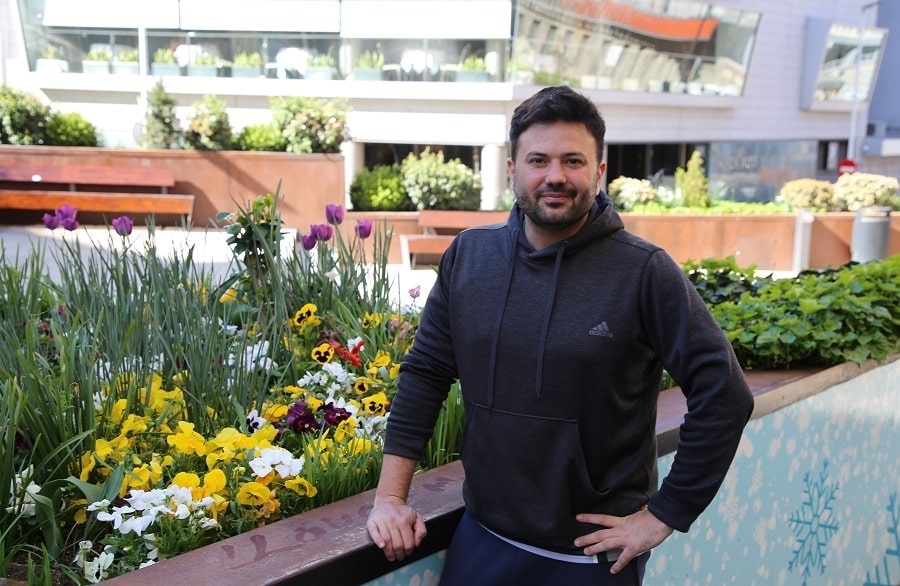 The symbol and pride of the Catalan Pyrenees, the Train Jaune (Yellow Train) offers an exceptional view of the Têt valley and the Cerdagne plateau. Cécilia Vaysse, the press officer providing administrative support at the Vernet-les-Bains (Occitania, France) branch of the Conflent Canigó tourist office spoke to us about the Train Jaune and outdoor activities in the heart of the Pyrénées-Orientales.
The symbol and pride of the Catalan Pyrenees, the Train Jaune (Yellow Train) offers an exceptional view of the Têt valley and the Cerdagne plateau. Cécilia Vaysse, the press officer providing administrative support at the Vernet-les-Bains (Occitania, France) branch of the Conflent Canigó tourist office spoke to us about the Train Jaune and outdoor activities in the heart of the Pyrénées-Orientales.
“The history of the Cerdagne line is full of twists and turns, challenges, and determination. The creation of a railway line was a crazy project to bring the cantons of the Cerdagne plateau out of isolation. It was the brainchild of two men: Jules Lax (1842-1925), director of the Chemins de fer du Midi and Emmanuel Brousse (1866-1926), a journalist working for l’Indépendant (1895-1926).
It took thirty years (1880-1910) for the Train Jaune to see the light of day! The difficulties of the route in a mountainous environment explain these delays.
On 18 July 1910, the Villefranche-de-Conflent/Mont-Louis-La Cabanasse section went into service, with immediate success.
On 28 June 1911, it was the turn of the Mont-Louis/Bourg-Madame section. Bourg-Madame was the line’s terminus until 1927.
The Train Jaune line was then connected to the French and Spanish trans-Pyrenean lines at Latour-de-Carol/Enveitg station.
The journey on the Train Jaune is remarkable because it passes through the Parc Naturel Régional des Pyrénées Catalanes and stops at places recognised as monuments by UNESCO. The Train Jaune starts in Villefranche-de-Conflent, and is classified as “The Most Beautiful Villages of France” including 3 UNESCO World Heritage sites as part of the Vauban network: the ramparts, Fort Libéria and the Bastera cave.
We recommend that our visitors stop off at Mont-Louis, which is halfway along the entire route. It’s the prettiest section, and the fortifications of the Vauban network are a UNESCO World Heritage Site.
Along the 62.6 km of the line, there are 650 engineering structures, including 19 tunnels and 40 bridges. Without doubt, the most remarkable are the Fontpédrouse Viaduct (Séjourné Viaduct) and the Cassagne Bridge (Gisclard Bridge), named after their engineers and designers, Albert Gisclard (1844-1909) from Nîmes and Paul Séjourné (1851-1939) from Orléans.
Historically, Commandant Gisclard submitted a project for a metal suspension bridge to cross the Ponts et Chaussées. It was built by the Arnodin company, world renowned for engineering its ferry bridges: Vizcaya bridge in Bilbao (1893), Rochefort-Martrou transporter bridge in Rochefort (1899) and in Marseille (1903).
The Gisclard Bridge is 234m long and has a gradient of 60mm/m. It crosses the Têt at a height of 80m. Its astonishing engineering allows the deck to pass over the masonry piers without resting on them! This is the oldest railway suspension bridge in France, the only one still in service, and was listed as a Historic Monument on 29 April 1997.
The two-storey viaduct is one of Paul Séjourné’s most original and remarkable works. It is 217m long and has a gradient of 60mm/m. On the lower level, the central ogive spans the Têt at a height of 65m spanning 30m. The upper viaduct crosses the Têt valley supported by 16 arches. This structure has been listed in the Inventaire Supplémentaire des Monuments Historiques since 1994.
The travelers can take their bikes onboard.The roads of the destination invite you to take a stroll through valleys and emblematic villages, but also to discover various passes, such as the Col de Jau and the Col du Roque Jalère.
Prades is a real cycling destination, and was the starting town for a stage of the famous Tour of Spain (the Vuelta) in 2017. Stage 3 was located in Prades Conflent Canigó/Andorra la Vella.
With its extensive network of rivers, the Conflent is a veritable haven for fishing and nature enthusiasts.
Considered to be France’s second largest canyoning hotspot, the Canyon du Llech in the commune of Estoher is one of the Canigó massif’s white-water networks, and offers a host of waterfalls for canyoning.
In the Conflent Canigó area, there are hot springs where you can go canyoning outside the summer period, from October to May, in water temperatures of around 35°C.
The network of caves at Les Canalettes and En Gorner, more than 30 kilometres long, offers a magical ambience, where many small underground streams with descents of up to 6 metres can be discovered.
And finally, the Casteil site, with routes ranging from 3b to 6c, is ideal for rock climbing. For experienced climbers, the massif Canigou offers a host of possibilities at Mariailles – at the eastern face of Canigó and the northwest face of Barbet.
Here you can also discover an underground ferrata.
But note that the Train Jaune remains an essential means of transport for the Haut Cantons. For those who want to take the Train Jaune in the summer season, we advise you to book a few days in advance, as it is very popular with tourists”.
Irina Rybalchenko










